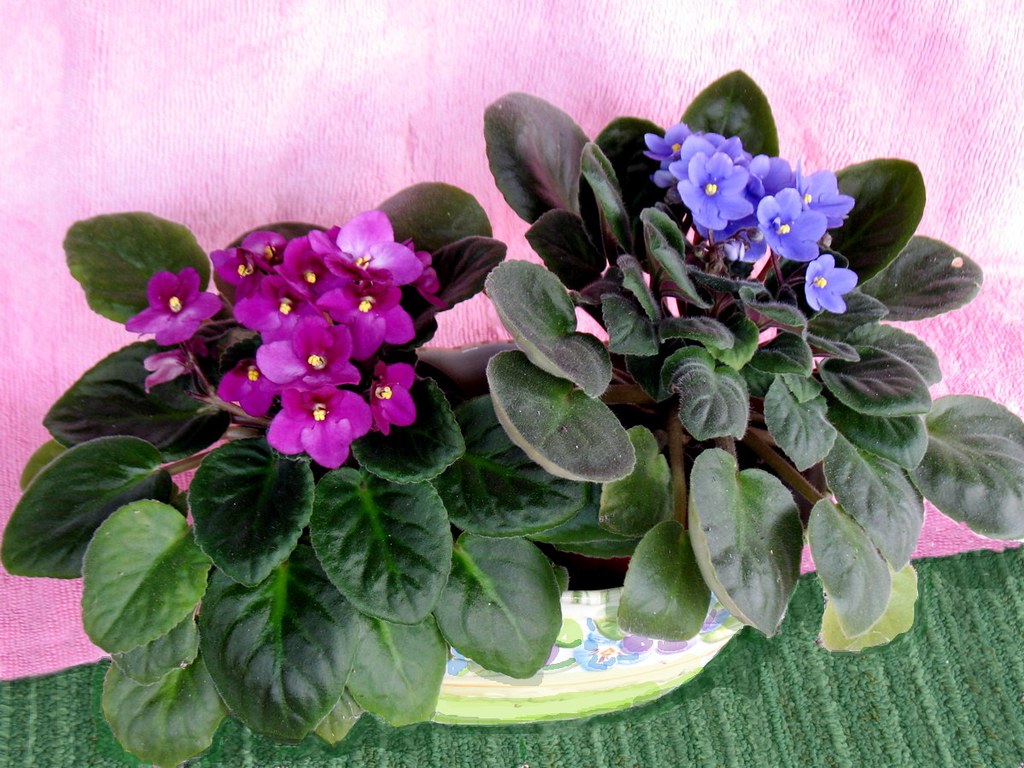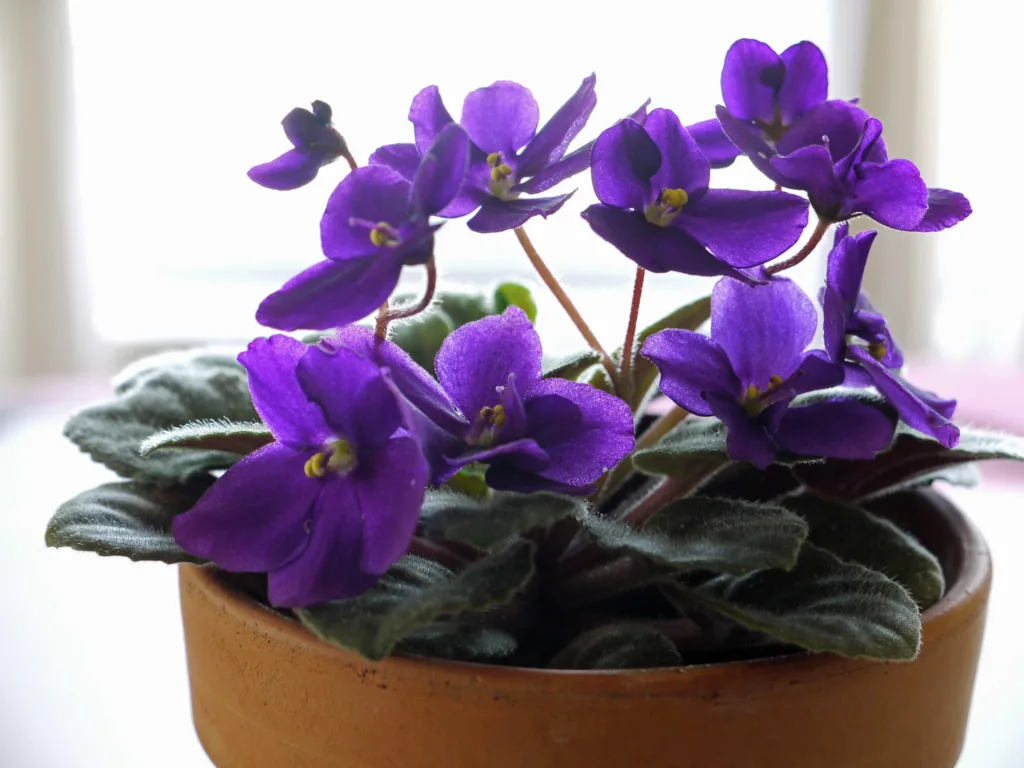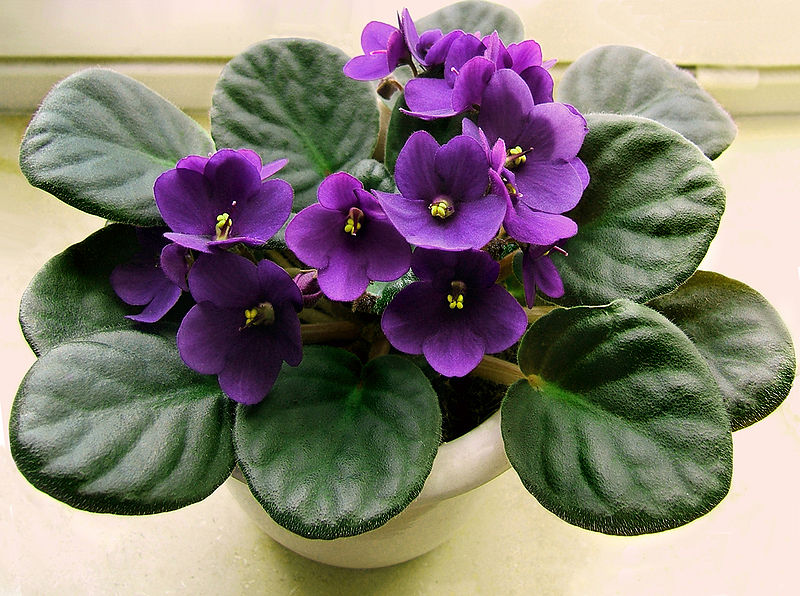Imagine having a vibrant and delightful flowering plant right in the comfort of your own home. African violets, with their exquisite beauty and easy care requirements, make for the perfect addition to any indoor garden.
Some varieties of African violet are suitable for hanging baskets. Hanging these baskets in well-lit areas can make for an attractive display, and the voluminous nature of the plants adds a unique dimension to the decor.
In this comprehensive guide, we will explore the world of African violets and provide you with all the information you need to grow and care for these stunning plants.
Understanding African Violets
What Are African Violets?
African violets, scientifically known as Saintpaulia, are native to tropical regions of East Africa. These plants belong to the Gesneriaceae family and are revered for their beautiful, velvety leaves and delicate, colorful flowers.
African violets come in a variety of shades, including purple, pink, white, and blue, making them a visual treat for any gardener.
Positioning African Violets on window sills allows them to receive filtered sunlight while bringing color to the window area.
Use African violets as part of event decorations for weddings, parties, or other special occasions. They can be included in floral arrangements or used as standalone features.
| Kingdom | Plantae |
|---|---|
| Division | Magnoliophyta |
| Class | Magnoliopsida |
| Order | Lamiales |
| Family | Gesneriaceae |
| Genus | Saintpaulia |
| Species | Saintpaulia ionantha |

Choosing the Right African Violet
When selecting an African violet for your indoor garden, it is important to consider a few key factors. Look for a plant with sturdy leaves that are not discolored or damaged.
Additionally, inspect the overall health of the plant by checking for signs of pests or disease. Choose a variety that captivates you with its flower color or leaf pattern, ensuring it suits your personal aesthetic preferences.
Creating the Ideal Growing Environment
Light Requirements
African violets thrive in bright, indirect light. A north-facing window is often the perfect spot to place your plants, as it provides gentle, filtered sunlight without exposing them to harsh rays.
If a north-facing window is not available, consider using sheer curtains or blinds to filter the light and protect your violet from direct sun exposure.
Temperature and Humidity
Maintaining the right temperature and humidity levels is crucial for the well-being of African violets. These plants thrive in temperatures between 65°F to 75°F (18°C to 24°C).
It’s important to avoid extreme temperature fluctuations and drafts, which can adversely affect their growth.
Additionally, African violets appreciate slightly higher humidity levels, so consider placing a humidity tray near their location or using a small humidifier to create an ideal environment.
Choosing the Right Potting Mix
African violets have unique soil requirements that contribute to their optimal growth. Use a well-draining potting mix specifically formulated for African violets.
These mixes usually contain a blend of peat moss, vermiculite, and perlite, which provide the ideal balance of moisture retention and drainage. Avoid using regular potting soil, as it tends to hold excessive moisture and can lead to root rot.
The Perfect African Violet Pots
Selecting the right pot for your African violet is essential for its health and growth. Opt for a pot that is slightly larger than the plant’s root ball, ensuring it has adequate space to grow.
It is recommended to choose a pot with drainage holes at the bottom to prevent water from accumulating and causing root rot.
Decorative pots without drainage holes can be used, but it is crucial to place the African violet in a plastic nursery pot with drainage before inserting it into the decorative pot.
Essential Care Tips
Watering African Violets
Providing the correct amount of water is vital to the health of your African violets. These plants prefer consistently moist soil, but overwatering can lead to root rot, while underwatering can cause dehydration.
Water your African violets whenever the top inch of soil feels dry to the touch. Always water directly on the soil or use a bottom-watering method by placing the pot in a tray of water for a short period. Ensure that excess water is drained from the tray to avoid waterlogged soil.
Fertilizing African Violets
To keep your African violets thriving and producing vibrant blooms, it is important to provide them with the proper nutrition.
Choose a balanced, water-soluble fertilizer formulated for African violets. Follow the instructions provided by the manufacturer and apply the fertilizer at regular intervals.
Remember not to exceed the recommended dosage, as over-fertilizing can harm your plants. A good rule of thumb is to fertilize your African violets every 2-4 weeks during the growing season and reduce frequency during the winter months.
Pruning and Pinching
Regular pruning and pinching are essential for maintaining the compact and bushy shape of African violets.
Remove any dead or yellowing leaves by gently twisting them off at the base. Additionally, pinching off the growing tips of the plant will encourage branching and promote a fuller appearance.
Pruning and pinching should be done with clean, sharp scissors or pruning shears to prevent any damage to the plant.

Propagation
If you want to expand your collection of African violets or share them with friends and family, propagation is an excellent option.
The most common method of propagating African violets is through leaf cuttings. Select a healthy leaf and carefully remove it from the plant, making sure to include the petiole.
Place the leaf in a container of moistened soilless mix, ensuring that the petiole is inserted into the soil. Cover the container with a plastic bag to create a mini greenhouse effect and provide bottom heat with a heat mat.
Within a few weeks, you will notice tiny new plants emerging from the base of the leaf. Once they have developed a few leaves, you can transplant them into individual pots.
Conclusion
African violets are not only beautiful but also relatively easy to care for, making them an excellent addition to any indoor garden.
By providing the right growing environment, appropriate care, and regular attention, you can enjoy these stunning plants and their vibrant blooms for years to come.
Remember to be patient and observant, allowing your African violets to grow at their own pace. So go ahead, embrace the joy of nurturing, and watch your African violets thrive in your home. Happy growing!
FAQs
Can African violets grow in India?
Yes, African violets can grow in India, especially in regions with a mild and temperate climate. They are typically grown as indoor plants due to their sensitivity to extreme temperatures.
Do African violets need direct sunlight?
African violets prefer bright, indirect light. Direct sunlight can be too intense and may scorch their delicate leaves. Place them in a location with filtered or indirect sunlight for optimal growth.
What is special about African violets?
African violets are known for their beautiful, vibrant flowers and attractive, velvety leaves. They come in a variety of colors and are a popular choice for indoor gardening. Their compact size makes them suitable for small spaces.
Are African violets hard to care for?
African violets are generally considered easy to care for, especially when grown indoors. They require well-draining soil, consistent moisture, and a humid environment. With proper care, they can thrive and bloom throughout the year.
Are African violets poisonous to cats?
African violets are non-toxic to cats, making them a safe choice for households with pets. However, it’s always a good practice to monitor pets around plants and consult with a veterinarian if there are concerns about plant toxicity.

